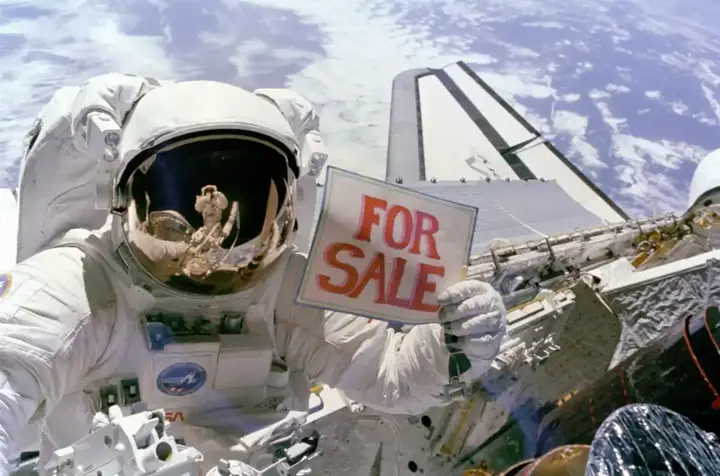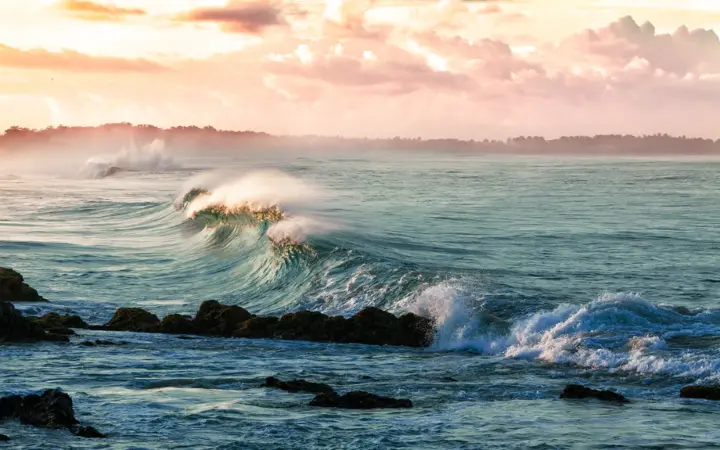In the age of private spaceflight, who can become an astronaut?
The title of "astronaut" is one of the rarest designations that man can carry, as only 652 people on our planet have ventured into outer space since Yuri Gagarin, the world's first astronaut. Figuring out how to leave Earth on a rocket was a really difficult task, requiring resources and manpower that only government institutions could provide, but today private companies can send people into space. In the early days of the space race, NASA accepted only experienced military pilots (mostly white men) into the astronauts, resulting in a significant restriction on those who had the opportunity to go to space in the United States. The Soviet space program selected only the best and most trained pilots to go into space. But in the past few decades, the spaceflight landscape has changed dramatically. NASA is no longer the only director of space travel in the United States, and many private companies — such as SpaceX, Blue Origin, Virgin Galactic and others — have now successfully launched humans into space. Some of these companies claim that their goal is to make space travel more accessible to the public, but it is still a unique and rare opportunity to join one of these missions. So, who can really become an astronaut these days?
Recommend
Show key points
- Since Yuri Gagarin's historic journey, only 652 individuals have traveled to outer space, highlighting the rarity of becoming an astronaut.
- Initially, space travel was exclusively a government-led endeavor requiring experienced military pilots, particularly in the U.S. and USSR.
- Private companies like SpaceX, Blue Origin, and Virgin Galactic have begun to reshape space exploration by independently launching humans into orbit.
- ADVERTISEMENT
- Today, NASA accepts astronaut applications from U.S. citizens with advanced STEM degrees, relevant work experience, and physical fitness.
- Over time, wealthy individuals have bought seats on spaceflights, with some paying millions for trips facilitated through Russian or American collaborations.
- Employees, scientists, individuals with unique backgrounds, and even those selected through contests have also found alternative paths to space.
- Though still elitist, the growing presence of private missions hints at a future where space travel could become more widely accessible, much like early air travel.
Who can become an astronaut?

When most people think of an astronaut, they think of images of rigorously trained and impressive people walking in spacewalks. In America, since the eighties, with the dawn of the Space Shuttle program, NASA missions included not only military pilots, but also mission specialists who were experts in a branch of science or engineering. At present, applications for NASA astronauts are open to all who meet the basic requirements: U.S. citizenship, a master's degree in science, technology, engineering, and mathematics, three years of post-degree professional experience, and the ability to pass a physical exam.
The role of politics and money:

Being an astronaut at NASA is a full-time job, but even in the eighties, a few people who weren't professional astronauts climbed into space aboard the Space Shuttle, but were important figures on government committees that oversaw NASA's budget and activities. Their dispatch may have played a role in NASA's funding. But space shuttle flights remained almost entirely limited to "real" astronauts, and the first U.S. private space flight (sponsored by NASA) did not begin until 2001, when one investor spent a whopping $20 million to go to the International Space Station. In fact, his trip was thanks to the Russian Soyuz program, which worked with the American company Space Adventures to book places for those who wanted and could pay. During the first decade of the twenty-first century, the company sent six other customers to the International Space Station for money, including a businessman, a video game developer, and a tech billionaire.
There are still a lot of wealthy people paying to go to space today, some of them go for minutes or hours on a quick round trip, such as Virgin Galactic flights, which have just reached the agreed boundary of outer space known as the Kármán Line at an altitude of 100 kilometers above sea level. A seat in Virgin Galactic costs nearly half a million dollars. Blue Origin is strictly confidential about its prices and seems to tailor its costs to what applicants can afford. A French businessman who traveled with Blue Origin, told French media: "Yes, it's expensive, but someone would buy a beautiful red car with that money.
If you don't have the money:

There are other ways to get one of these trips. As these space companies proliferated, many private astronauts were employees of the company running the launch, to make sure everything went smoothly and to see how they could improve their technology. Aboard Virgin Galactic, for example, Beth Moses flies as the company's professional astronaut trainer, and Christopher Hoy as a senior member of their engineering team. Others were selected for other reasons, some of whom were cancer survivors and some fitted with a prosthesis. A place on Blue Origin was recently given to Ed Dwight, NASA's first black American astronaut who was never able to fly, correcting a decades-long mistake. Scientific institutions have funded sending their researchers to make new discoveries; for example, the fifth Virgin Galactic mission in 2023 sent planetary scientist Alan Stern and science writer Kelly Girardi to collect vital data, and wear monitoring devices on themselves to understand the effects of launching a rocket and returning to the Earth's atmosphere on our bodies.
Finally, and the most democratic of the current options, a handful of people have won seats on a space trip through a contest or charity fundraiser for nonprofits.
The end:
Given that most private astronauts have stepped up over the past five years, we can say that the era of private spaceflight has just begun. A century ago, flying on an airplane was an expensive luxury, and now it's quite commonplace, and spaceflight may take a similar path, and become more accessible over time.
![]()
Sacred places in the Andes: 7 secrets of Machu Picchu
Machu Picchu isn't truly the lost city of the Incas, and it's not as forgotten as once believed—locals were living there when rediscovered. Many marvels are hidden underground, and if you're up for a sweaty climb, you can skip the pricey bus and enjoy epic views for free. more- ADVERTISEMENT
![]()
The world of Arab game developers - independent and unknown successes
Arab games developers - Unknown independent Successes more- ADVERTISEMENT
![]()
The splendor of nature and the challenge of conditions in the oasis of Taghit in western Algeria
Taghit is a hidden gem in western Algeria, where golden dunes meet ancient history. Adventure seekers can sandboard down towering dunes, explore mysterious caves, or discover 20,000-year-old rock carvings. The ancient walled city of Kassar, once forgotten, is now being restored to its former glory. more- ADVERTISEMENT
![]()
A book that may interest you - stop pleasing others
A book that might interest you - Stop People Pleasing more- ADVERTISEMENT
![]()
A Simple Guide to Introducing Yourself: Creating an Unforgettable First Impression
Introducing yourself is more than just saying your name—it’s a chance to show personality, goals, and values. By sharing achievements, teamwork skills, and even hobbies, you can make genuine connections and leave a strong impression, all while staying clear, honest, and adaptable in every interaction. more- ADVERTISEMENT
![]()
What is the primary source of oxygen on Earth?
Cyanobacteria were the first to release oxygen through photosynthesis, sparking a massive rise in atmospheric oxygen that wiped out many anaerobic organisms. Today, tiny ocean microbes like Prochlorococcus are major contributors to Earth's oxygen—even more than trees—though most of the planet's oxygen is locked in solid compounds, not the air. more- ADVERTISEMENT
![]()
Characteristics of scientists who have won Nobel Prizes
The Nobel Prize honors brilliant minds whose passion, creativity, and perseverance bring lasting benefits to humanity. From Einstein to Curie, it celebrates visionary thinkers who challenge norms, pursue curiosity, and collaborate to solve big questions—all while staying humble and focused on making a difference in the world. more- ADVERTISEMENT
![]()
Why aren't all the earth's oceans the same salinity?
Ocean salinity changes because of things like evaporation, rainfall, river flows, and ocean currents. The Red Sea is super salty due to high heat and little rain, while areas like the Bay of Bengal are fresher from heavy rainfall. These differences help shape ocean currents and marine life. more- ADVERTISEMENT
![]()
The Shintoan Value Behind Japanese Aesthetics
Japanese aesthetics isn’t just about fleeting beauty like cherry blossoms—it's about creating harmony between nature and human touch. From food that enhances natural flavors, to tatami mats crafted from carefully chosen straw, to beauty trends that embrace imperfections, Japan finds beauty in making things feel naturally perfect. more- ADVERTISEMENT
![]()
The Five Great Scandals in Climatology
Climate science has faced serious issues, from fake datasets in top journals to the use of extreme, unrealistic emission scenarios. Political pressure often blocks correction, making it hard to fix flawed research. These scandals show how climate science can struggle when science and politics mix too closely. more- ADVERTISEMENT





















